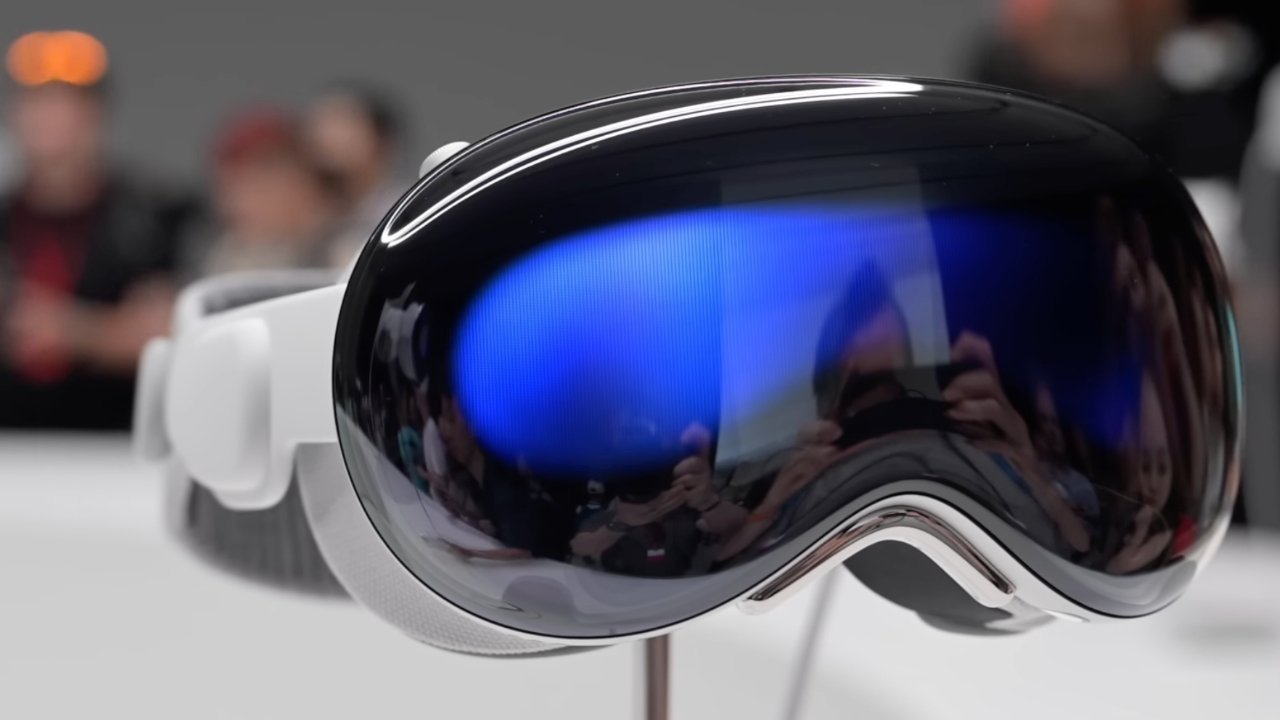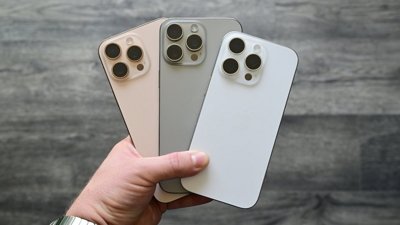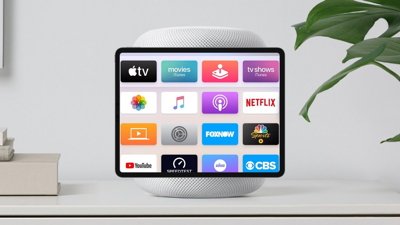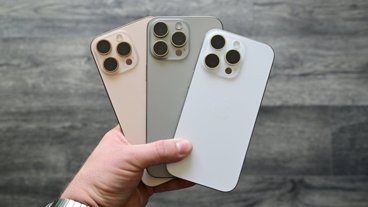The Apple Vision Pro will take a long time before it becomes a significant part of Apple's business, a report reasons, with the headset business far from reaching iPad sales levels.
Expectations for initial sales of the Apple Vision Pro are low, with claims Apple has cut down its initial orders for the headset due to difficulties in producing it, alongside general complaints about cost. This may not necessarily be a big issue for Apple, as a report insists that it would take a long time for the headset arm to majorly impact Apple's business anyway.
Writing in Bloomberg's "Power On" newsletter on Sunday, Mark Gurman compares the growth of different arms of Apple's empire, and reasons that the Vision Pro could be glacial in its growth in comparison.
The iPhone and iPad were "significant revenue contributors nearly instantly," Gurman writes, with the original iPhone thwarting concerns over pricing by selling a million units in fewer than three months, and generating a third of Apple's overall revenue by 2009. The iPad managed 18% of total sales revenue one year after its debut.
The Apple Watch was a lot slower to take off, but has become "an important part of the business," Gurman believes. While Apple hasn't broken out Apple Watch sales to its own category like the iPhone and iPad, it's still part of the Wearables, Home, and Accessories segment that brings in about $40 billion a year.
For the Apple Vision Pro, Gurman reasons that the very limited release schedule puts it on a much slower sales trajectory than the Apple Watch. Where the Apple Watch launched in nine countries for $349, the Apple Vision Pro will do so at ten times the cost and only in the United States.
Expansion into other countries for the Apple Vision Pro won't happen for months after its early 2024 launch, and probably won't hit resellers until 2025.
Culture and finances
Gurman also reaches into history for his comparison, pointing out that society had grown accustomed to wrist watches for 200 years, so a fitness tracker or smartwatch is trivial to adopt. A heavy headset that requires a separate external battery and needs to be worn on their face poses a challenge since there have not been literal centuries of similar products on the market.
Breaking down the finances, Gurman says the original first-year goals of Apple from a few years ago would have entered the "high single-digit millions," which soon became up to 4 million, then 1 million. Current first-year sales projections are at between 400,000 and 500,000 units.
At a $3,700 average selling price for the headset and extras like prescription lenses, Apple hitting the low-end estimate would equate to first-year earnings of about $1.5 billion. To reach the level of the iPad, Gurman believes the headset would need to grow by 20 times and reach approximately 8 million units per year.
Despite the prospect of a cheaper model, reaching iPad levels of revenue is "all but impossible in the foreseeable future." Even with the release of a cheaper model on the cards, Gurman reckons most people will stick with the "safer pick" of a Mac or iPad, at least until Apple comes out with a version closer to a pair of glasses.
The notion of the Apple Vision Pro being a slow-burner for the company isn't new, as it has been discussed in the past as being more of a long-play for the company.
AppleInsider has previously written about how the initial headset clearly isn't "for everybody," and that it is an aspirational product that is intended to convince a wider consumer base that they may want to use it, or a future iteration, down the road.
Coupled with the march of technology making things smaller, faster, cheaper, and generally better, as well as Apple having bountiful resources and cash to play the waiting game, no-one can really expect Apple's headset project to become an iPhone-level seller off the bat.
 Malcolm Owen
Malcolm Owen







-m.jpg)






 Charles Martin
Charles Martin
 Wesley Hilliard
Wesley Hilliard
 Stephen Silver
Stephen Silver
 William Gallagher
William Gallagher

 Marko Zivkovic
Marko Zivkovic
 Andrew Orr
Andrew Orr
 Amber Neely
Amber Neely







9 Comments
Give it Two seasons. With proper advertising and product placement which I'm sure they have it locked down. - Every headset sold will be four iPads in terms of coin - it will replace the iPad just like the iPhone replaced the iPod. The wealthy will be buying this like a pint head passing the bat to his pint head friends. Look how dumb people look with sunglasses - Aesthetics won't play a feature in this game when the kids are in the backseat with a 4k three-D TV or Adults sitting in a park. The possibilities are endless...
Never understood this about Gurman's beat at Bloomberg. Is it perfunctory for Bloomberg journalists to always have speculation on a company's financial performance?
As I recall, after Gurman's stint at 9to5mac, as a teenager, where he published Apple rumors, he went to college at Michigan or Michigan State as a journalism major. He then gets a job at Bloomberg as their Apple rumor monger, or perhaps tech gadget rumor monger. He is obviously the best Apple rumor monger, so Bloomberg got a coup out of getting him before other media places did. Ever since he was hired by Bloomberg, he typically has finance oriented articles regarding Apple financial performance.
Financial analysis as portrayed in media is an art, and I'm saying that in the best light. In the worst light, you must assume a financial analyst is lying, or perhaps lying by omission. Their audience is not you, Joe Investor, but fund managers. There is definitely coded language or unwritten rules of investment that these people understand that we do not. Like, they have back channels to confirm information that we do not. So, more often than not, Joe Investor is being manipulated, while the games plays out among the big investors. It's like a psychological game among this very small audience of billion dollar fund managers, who are actually able to move the stock price with their trades.
So, why is Gurman playing around with this? Pretending to give out financial analysis?
You only should trust this sort of thing with actual data. For this article, not one word should be believe with out accompanying data.